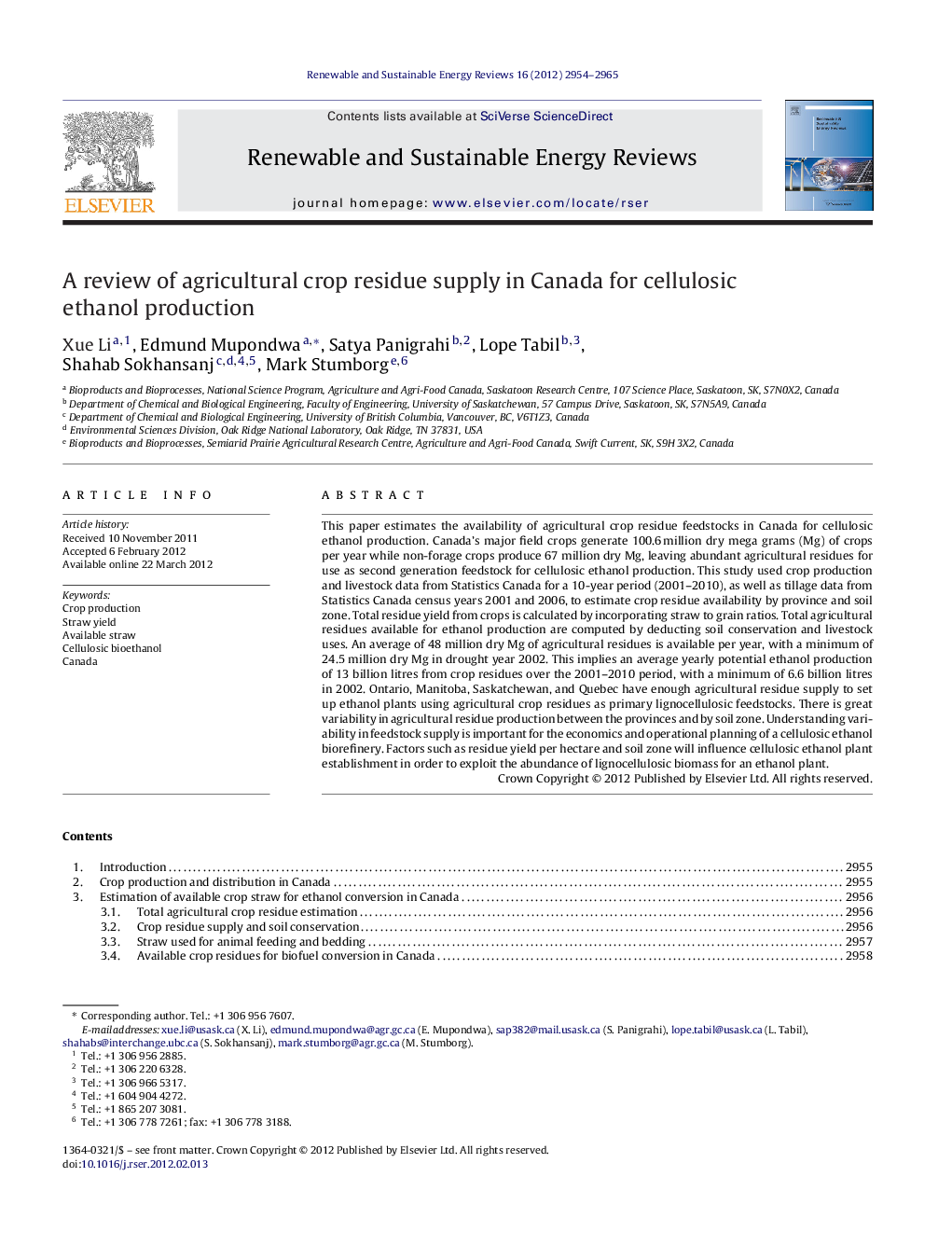| کد مقاله | کد نشریه | سال انتشار | مقاله انگلیسی | نسخه تمام متن |
|---|---|---|---|---|
| 1751026 | 1018407 | 2012 | 12 صفحه PDF | دانلود رایگان |

This paper estimates the availability of agricultural crop residue feedstocks in Canada for cellulosic ethanol production. Canada's major field crops generate 100.6 million dry mega grams (Mg) of crops per year while non-forage crops produce 67 million dry Mg, leaving abundant agricultural residues for use as second generation feedstock for cellulosic ethanol production. This study used crop production and livestock data from Statistics Canada for a 10-year period (2001–2010), as well as tillage data from Statistics Canada census years 2001 and 2006, to estimate crop residue availability by province and soil zone. Total residue yield from crops is calculated by incorporating straw to grain ratios. Total agricultural residues available for ethanol production are computed by deducting soil conservation and livestock uses. An average of 48 million dry Mg of agricultural residues is available per year, with a minimum of 24.5 million dry Mg in drought year 2002. This implies an average yearly potential ethanol production of 13 billion litres from crop residues over the 2001–2010 period, with a minimum of 6.6 billion litres in 2002. Ontario, Manitoba, Saskatchewan, and Quebec have enough agricultural residue supply to set up ethanol plants using agricultural crop residues as primary lignocellulosic feedstocks. There is great variability in agricultural residue production between the provinces and by soil zone. Understanding variability in feedstock supply is important for the economics and operational planning of a cellulosic ethanol biorefinery. Factors such as residue yield per hectare and soil zone will influence cellulosic ethanol plant establishment in order to exploit the abundance of lignocellulosic biomass for an ethanol plant.
Journal: Renewable and Sustainable Energy Reviews - Volume 16, Issue 5, June 2012, Pages 2954–2965